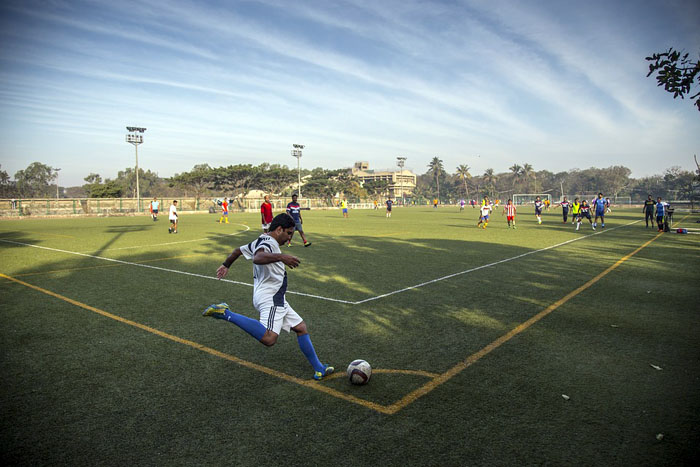In the world's most popular sport, soccer, understanding the principles of physics becomes an indispensable tool for players, coaches and sport scientists.
 taking a corner
taking a corner Ball Trajectory
Knowledge of physics helps players predict and control the trajectory of the ball when they pass, shoot, or receive it. Understanding concepts like projectile motion, angle of launch, and force application aids in achieving accurate and powerful kicks.
The movement of the soccer ball through the air is affected by the initial forces applied to it by the head or the foot, then while it is in the air, gravity and aerodynamic forces can cause it to curve.
Ball Speed and Spin
Physics helps players manipulate the spin of the ball, which can affect its flight path and behavior upon impact with the ground or another player. Putting rotation on the ball can cause it to bend in the air like a baseball curve ball. Spin can make a ball curve, dip, or swerve, making it challenging for opponents to defend or goalkeepers to save.
A free kick has been measured at speeds up to 70 mph speed with a spin of 600 rev/min. David Beckham famously uses spin imparted on the ball to curve a free-kick around a defensive wall and goalkeeper to score his goals. Calculations show that at 25 m from the goal and a velocity of 25 m/s, Beckham can swing the soccer ball 4.57 m from the straight path by using spin.
Did you Know?
A standard soccer ball is an Archimedean Solid - a "truncated icosahedron" of 60 vertices and 32 faces. Twelve of the faces are pentagons (5-sided polygons) and twenty are hexagons (6 sided polygons). There is a carbon molecule nicknamed the "Buckeyball" which has the same shape as a soccer ball.
2010 World Cup Ball
Throughout the 2010 World Cup there were complaints by players about the ball in use - the Adidas-made "Jabulani" ball. The name Jabulani means "bringing joy to everyone", but it did not seem to bring joy to the goalkeepers and strikers who claim it has erratic and unpredictable flight. A scientific analysis of the ball supported the players. The analysis concluded that the ball may simply have been too round to fly straight. Part of the problem may be also that the stitches of the Jabulani are internal, so the ball resembles a perfect sphere. Irregularities such as exposed seams on the surface of balls ensure a more stable and controlled trajectory, and are what make possible spin in tennis or a curve ball pitch in baseball. Adidas countered the lack of stitches by designing the ball with 'grip n groove' texturing and claimed that it improves the stability of its flight and the players' grip when striking it - which was not supported by the results on the field.
See more about the World Cup Balls.
Related Pages
- Biomechanics and physics of sport
- How to bend it like Beckham
- Soccer balls for sale


 Current Events
Current Events